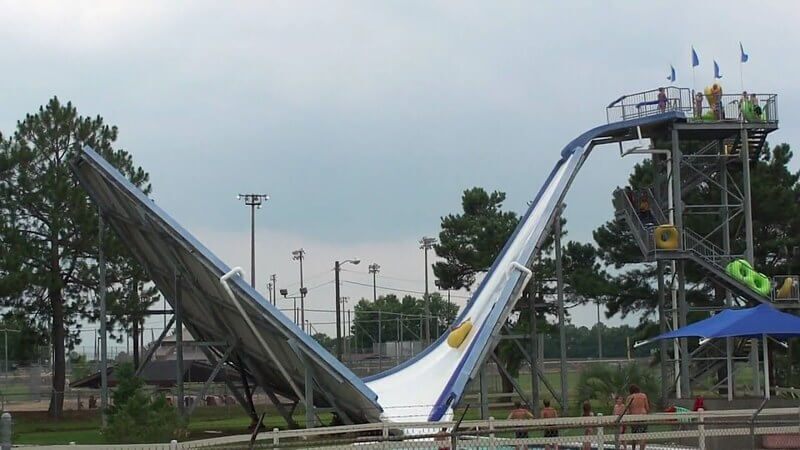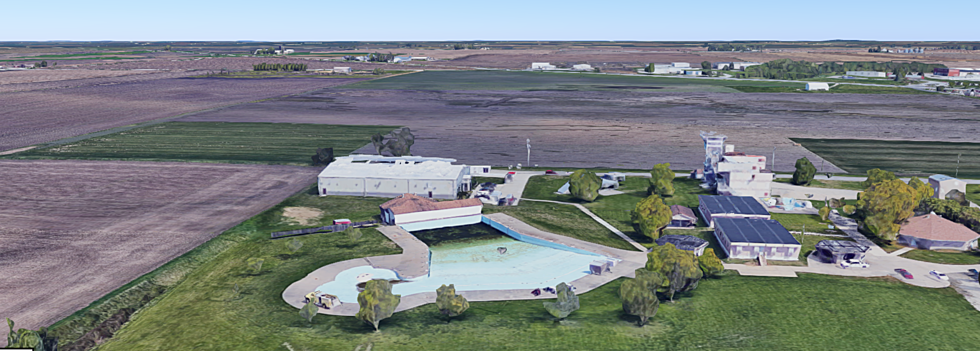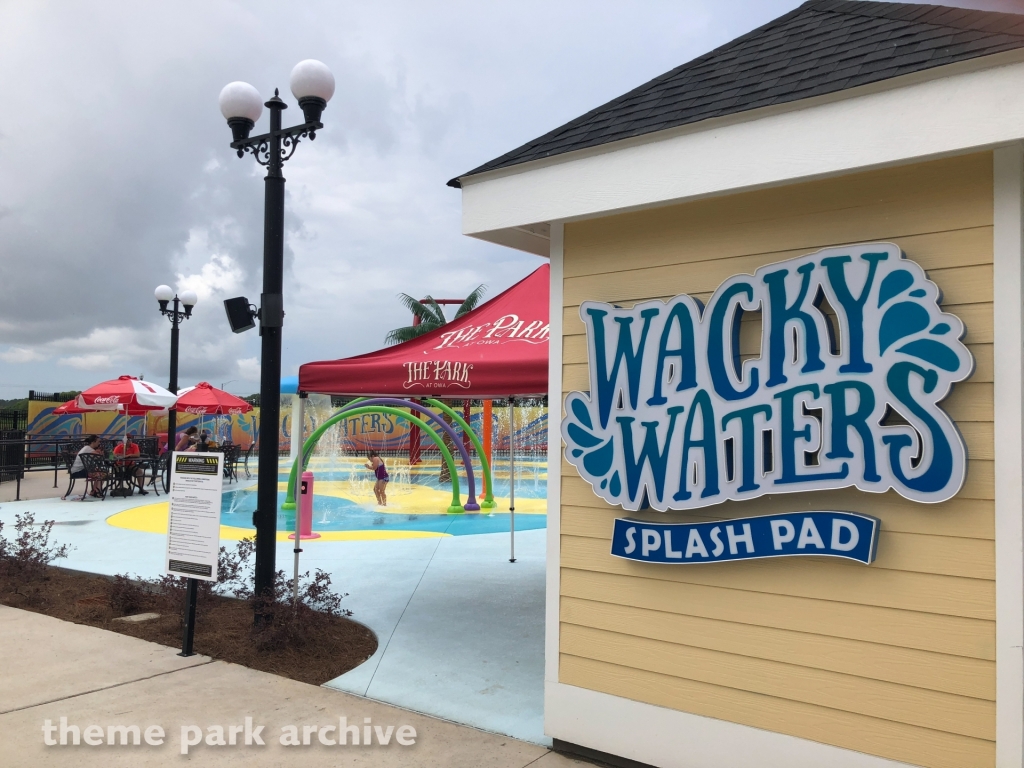Wacky Waters
There are many types of bodies of water out there and some might have you scratching your head in confusion and knowing that no one would ever fill up a water balloon with that!
- Wacky Waters R.I.P. The great jingle by the immortal Steve Couch as performed by a man who, it is fair to say, sings for all of us.
- Weeki Wachee is an enchanted spring where you can see live mermaids, take a trip on a river boat cruise, learn about Florida wildlife, and swim in the pristine waters at Buccaneer Bay. You can also embark on a paddling adventure down the pristine waterway of the Weeki Wachee River.
Wacky Waters does provide players with some very intriguing inbuilt features. And if you, like us, enjoy these features a lot, then we know of some other slots for you to try out. And if you, like us, enjoy these features a lot, then we know of some other slots for you to try out. Wacky Waters Online Slot Review Free Wacky Waters slot designed by Playtech comes with 5 reels and 15 paylines. Main symbols include octopus, shark, starfish, shrimp, seahorse and striped tropical fish. Puffer fish, crab, nd anchor are wild, scatter and bonus symbol respectively.
We asked our Inside Scoop members what comes to mind when they hear the word “water.” These are their answers:
Crashing ocean waves!
Wacky Waters
—Chantsha Burton, 10, Brooklyn, New York
Great water fights with my friends and family.
—Leah Grossman, 13, Jerusalem, Israel
A pool party with my friends.
—Esther Beren, 8, Lakewood, New Jersey
A lake.
—Bruchi Censor, 11, Lakewood, New Jersey
A lake.
—Bruchi Censor, 11, Lakewood, New Jersey
A drink.
—Ephraim Simcha L., 6, Cincinnati, Ohio
An ice-cold cup of water!
—Baila Goldberg, 13, Far Rockaway, New York
The river near my house called the River Tyne.
—Malky Sulzbacher, 10, Gateshead, England
A big waterfall, with water crashing down.
—Zahava, 14
A puddle or a bottle of water.
—Eliyahu Mevorach, 10, Jerusalem, Israel
Thirst.
—Tzirel Zar, 8, Jackson, New Jersey
Wacky Waterslides
The ocean.
—Kayla Subar, 9, Los Angeles, California
Can you guess what the #1 most common answer was to: “What does water make you think of?” Well, what would your answer be?
If you said “swimming”
then join the crowd! That’s exactly what they answered!

Rochel Friedman, Liora Kohanchi, Racheli Bistricer, Tziporah Moskowitz, Nomi Bloch, Rachelli Spector
For the most part, water that we come in contact with every day is enjoyable, calm, fun, delicious, and useful. But sometimes water is a little more exciting than that! For example, two people answered something a little more unusual:
How our street floods every time it rains!
—Atara Burstyn, 7, Southfield, Michigan
When the air conditioner in our classroom broke and spritzed water on us and we thought it was raining!
—Rivka L., 12, Givat Ze’ev, Israel
Along those lines, today we’re going to explore some other more unusual bodies of water….
Pink Lake
Lake Retba in Senegal looks like a big swimming pool of pink lemonade! It’s also got a high salt content, which means you can float on it easily. What’s with the color? There are tiny living organisms in the water called microalgae, which produce a red color to help them absorb sunlight.
Another similarly colored lake is the Laguna Colorada in Bolivia, but unlike pink lemonade, it more resembles what the Nile River must have looked like during the first Makkah! It’s bright red! Weirder than that, it’s dotted with little white islands made of borax, which, believe it or not, is what’s used in many laundry detergents! The Laguna Colorada gets its color from the large amount of red algae living in it. It’s also home to pink flamingos, which definitely adds something to the color scheme there, too.
Spotted Lake
There’s a lake in British Columbia called Kliluk, which is as spotted as a leopard! Why’s that? It’s super rich in minerals and even has small doses of sliver and titanium in it. Most of the water evaporates over the summer and only these colorful mineral deposits are left behind. Some even crystalize… and ta-da! Little spots!
During World War I, the salts from this lake were used to make explosives.
Multicolored Water
In Flores, Indonesia, there’s a unique cluster of lakes in a crater on Mount Kelimutu that change colors. It’s actually not unusual for crater lakes to change colors because little volcanic eruptions can change the chemical makeup of the water inside it all the time. But this lake is super strange; there are three lakes that belong to the same crater and they all change to different colors at the same time!
Black Lake
Those colored lakes sure look pretty, but guess what? There’s also a lake that is black! It’s called Pitch Lake and is located in Trinidad. Why is it black? If you’re thinking that taking a dip must feel like taking a dip in tar, you’d be absolutely right! It’s actually the largest natural deposit of tar or asphalt in the world! It’s larger than 40 hectares (one hectare equals 10,000 square meters), is 75 meters deep, and has a lot of strange organisms in the water you won’t likely see anywhere else.
Locals promise that the water has mystical healing powers for anyone who dares to swim in the super sticky waters, although nothing’s been scientifically proven. And if you’re thinking, Well, I’m not heading there anytime soon, rest assured it might make its way to you! Some of the asphalt mined from there was used to pave some streets in New York.
Mirror Water
You’ve probably seen clear water where you wade in and can see your toes wiggling in the mud, and now we know there’s colorful water out there, too. But in Bolivia there’s a lake that literally transforms into a giant mirror of the sky! It’s called the Salar de Uyuni, and at 3,900 square miles (10,582 square kilometers), it’s the world’s largest salt flat. But during the wet season, the rains flood nearby lakes and cover the Salar de Uyuni, causing it to become an amazing large, watery mirror! Imagine: If you’re wading there and want to check if you have anything stuck between your teeth leftover from lunch, you don’t have to ask your friend, you can just look at the water and check out your reflection.
Boiling Water
If you feel like seeing something ultra-cool (or ultra-hot if you want to be literal), head to the Morne Trois Pitons National Park in Dominica. You’ll need to take an extremely grueling three- to six-hour hike, but when you get there, you’ll see something really strange: a natural boiling lake! It’s actually a fumarole, which means an opening in the planet’s crust that releases gas and steam and is constantly heated by molten lava underneath. It’s so hot it literally boils the water. If that doesn’t sound like your cup of tea, I completely understand! (And in case you’re wondering, no, you cannot go swimming in there. But some explorers still think it’s super cool to look at.)
Exploding Lake
Lake Nyos in Cameroon is an extraordinary lake for a fascinating reason. It explodes! That’s because of the pocket of magma right underneath it, which fills the lake with carbon dioxide, which in turn turns the water into carbonic acid.
It might sound amusing — an exploding lake, wouldn’t that be fun to replicate in science class! — but it’s actually really dangerous! In 1986, the lake “burped” a massive spray of carbon dioxide into the air, which killed 1,700 people and thousands of animals from the nearby villages. It was the first time it was ever known to happen and scientists are still worried that it could happen again some day in the future.
Watery Tongue Twister
Here’s a strange one: The Philippines consists of around 7,640 islands — about 2,000 of which are inhabited. On Luzon Island, there is a body of water called Taal Lake. And in the middle of Taal Lake is an island called Volcano Island. And, get this, Volcano Island’s crater has yet another lake that has its own small island called Vulcan Point. Are you following me? So that’s an island on a lake on an island in a lake on an island. Try saying that ten times fast!
Backward-Running Waters
The Tonlé Sap in Cambodia is so strange, scientists find it hard to agree if it should be classified as a lake or a river. Why’s that? During the dry season, the water drains into a nearby river, the Mekong River. But when the monsoon season arrives, the flow of the water is so great that it — get this — actually flows backward from the river! It is highly strange for a lake to change direction and flow so strongly in two different directions like that.
Most Toxic Lake
It’s interesting to read about it because we’re certainly never going there, but Lake Karachay in Russia is known to be the most toxic and polluted lake on the entire planet. That’s primarily because for many years it was used as a dumping ground by the former Soviet Union’s nuclear weapon facilities. Now it’s so polluted that the lake is radioactive. Even just standing on its shores for one hour can expose a person to a deadly dose of radiation.
Saltiest Body of Water
The saltiest body of water in the world is — surprise, surprise — not Yam Hamelach; it is the Don Juan Pond in Antarctica that was only discovered in 1961. (It got its name from the two helicopter pilots who discovered it.)
Its salinity (salt content level) is over 40 percent! By contrast, the Dead Sea is approximately 34 percent salt. Researchers have no idea why this random pond in Antarctica is so salty. It’s so salty, it apparently feels kind of syrupy to wade in!
Interestingly enough, the salt in this pond is made of mostly calcium chloride, which lowers the water’s freezing point. So that means that even though it’s in the freezing South Pole, it doesn’t freeze, not even at minus-58 degrees Fahrenheit!
Yam Hamelach
What’s an article about unusual water without mention of Yam Hamelach?
It is the deepest salty lake in the world (its 304 meters of depth blows Don Juan Pond’s three feet out of the water!) And it is way too salty for animals to survive in it, which of course gives it its name: the Dead Sea.
If you’ve ever been there, you probably know the salty waters are hard to actually swim in but marvelous for floating in! Talk about relaxing! (But don’t drink it! It’s ten times saltier than ocean water, so that’s not gonna delight your taste buds. And definitely make sure the water doesn’t get in your eyes, either — ow!)
Here are some more fun facts about the Dead Sea:
The salt from the sea might be bitter and sting if you go in with an open sore on your body, but it is known to have a variety of skin-care benefits. It’s been proven to help treat psoriasis, cellulite, acne, hives, and other skin conditions. And it’s not just the water; it’s the mud, too! People visit the Dead Sea from all over the world to glop the mud on their faces for a great cleansing facial, or they buy Dead Sea mud, available in stores all over the world.
The air around the Dead Sea is known to be low in pollen and allergens so it’s highly unlikely someone will have an allergic reaction there.
Time for some fun history: King Herod the Great ordered the world’s first health resort to be built at the Dead Sea. Queen Cleopatra of Egypt also loved going to the Dead Sea. She ordered resorts and cosmetic factories to be built along the shores
Asphalt naturally rises to the top of the Dead Sea, and centuries ago, this asphalt was used by the ancient Egyptians in the mummification process.
The Dead Sea is located at the lowest point of the Great Rift Valley, which passes through 20 countries and runs almost 4,000 miles. Since it’s located at such a low point, the sun’s UV rays are weaker than usual and you probably won’t sunburn even if you forget to bring along your sunscreen
Whatever your favorite water hole, or whatever you think of when you hear the word water, I hope your every interaction with water is positive and fun!
(Originally featured in Mishpacha Jr., Issue 832)
Oops! We could not locate your form.


Washington Crossing the Delaware
Rivka Goldblatt of Manchester, England, is a professional genealogist, meaning she spends a lot of time studying her own and other people’s family trees, and even getting paid to do it
“We grew from a small, residential lawn cutting business to a full-service landscaping, maintenance, installation, and snow removal company for residential and commercial customers”

How were antibiotics discovered? Who were the people involved in developing this world-changing, lifesaving medication? Let’s find out
Mass transit in general and some of the unusual things that can be seen on any ordinary day, from Lower Manhattan to the high Himalayas
No, this was not a normal event. Why would the army call up reservists on Yom Kippur?
Coordinates: 41°36′14″N90°37′48″W / 41.604°N 90.630°WWacky Waters Adventure Park was a water park located in Davenport, Iowa that was in operation from 1984 to 2006. In February 2007, it was announced that Wacky Waters has closed and the property has been sold to the Eastern Iowa Community College District, which will operate The Midwest Center For Safety And Rescue Training on the property, a training facility for fire departments.[1]
In 1986, a couple received national attention by having their marriage ceremony atop the park's 'Daredevil' water slide. After exchanging vows, they kissed each other while sliding down the large slide.[2]
Former Attractions[edit]
Before the park closed, it featured numerous attractions including:
- Kids' Pirate Ship
- L'il Squirt Children's Slide
- Extreme Slide called the Bonsai
- Two Body Slides, Daredevil & Thunderbolt
- The Wave Pool
- Pond with Diving Boards and Zip Lines
- Go Carts
- Miniature Golf
References[edit]
- ^Lemmon, Dustin (February 6, 2007). 'Former Wacky Waters becomes fire training center'. Quad-City Times.
- ^'Iowa Couple Plan to Take Plunge Atop the 'Daredivil' Water Slide'. San Jose Mercury News. August 8, 1986.